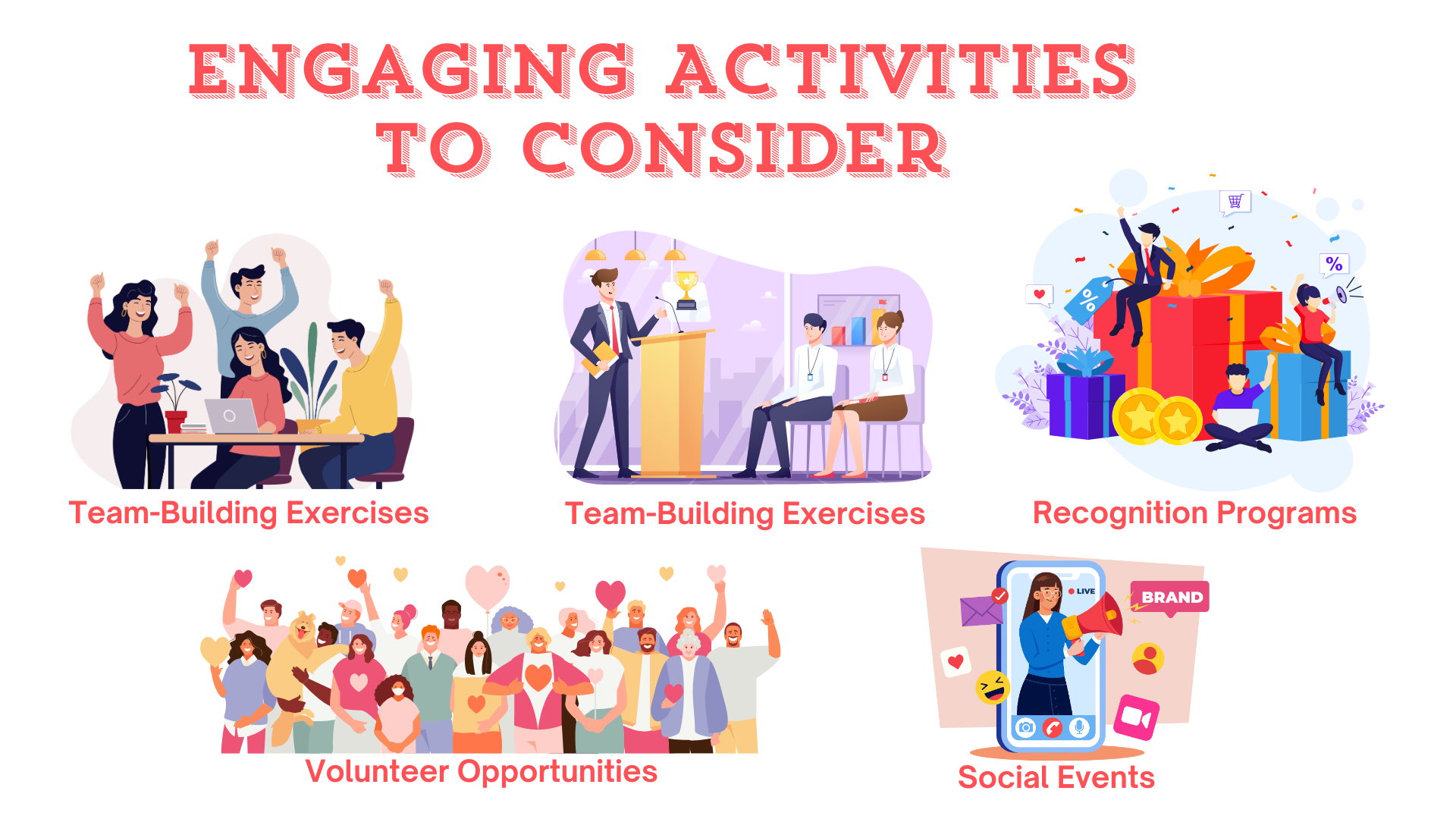Organizations with strong employee engagement see a 24% improvement in performance quality and a 10% boost in customer satisfaction.
At Kredily, we know how crucial it is in maintaining and boosting employee productivity, creativity and hence business success. Studies show that companies with effective engagement strategies have 59% lower turnover rates, leading to greater retention and productivity.
In the modern digital workplace, digital employee experience solutions are essential for driving engagement. They provide organizations with deeper insights into employees’ day-to-day interactions, enabling IT and HR teams to proactively address issues, ensure seamless system access, and eliminate small frustrations that can erode morale and productivity. However, mastering these tools is only one part of a broader strategy.
In this blog, we will understand what exactly employee engagement is, the benefits of the same, the various categories present and WHY it is so crucial. There will also be informative methods of increasing engagement, how engaging activities should be like, and how best to measure engagement.
Before we move into details, let’s first decipher what it actually means to have Employee Engagement exactly and what it does not exactly mean.
What is Employee engagement: It is more than just job satisfaction We therefore seek to understand employee engagement as a multifaceted construct. It includes concept of belonging, meaningfulness and compatibility with organizational values, mission, and vision. It is more about the employee feeling appreciated, trusted and able to give his/her optimum in delivering his/her work.
What Employee Engagement is not:
- Motivation: Motivation is a basic need, motivation but to engage, at least, it’s an emotional commitment. This is to mean that self-motivated employees should never feel as though they are valued based only on productivity or as though work always comes first.
- Performance: The performance, therefore, can be understood as an outcome, not an input, to work. Happy workers consider things like tiredness, vague objectives, and tendencies of imposter phenomena to be barriers that your team should remove to get excited about the work it is doing.
Benefits of Employee Engagement:
-
Increased Productivity: Having employees engaged at work means that they are capable of working harder and smarter resulting in increased productivity, and thereby increasing the company’s bottom line.
-
Improved Employee’s Satisfaction: When employees are motivated and committed they offer quality service which translates to more customer satisfaction.
-
Reduced Turnover: Companies whereby the employees are happy to work for, usually have low employee turnover rates. Some of the reasons why employees show commitment include; the provision of gainful employment and acknowledgment to give personalized attention involving staff, customers, and vendors, loyalty, and professional growth.
-
Enhanced Innovation: Out of the engaged employees, it is easy for new ideas to be considered and implemented thus improving innovation.
-
Stronger Company Culture: When employees are engaged, they give a positive outlook and environment to any company that they work for.
Types of Employee Engagement:
Employee engagement can generally be categorized into three types:
- Transactional Engagement: Workers’ attitude and emotions are stable and the majority of them have their needs and benefits met but they do not have a strategic engagement with the business.
- Contextual Engagement: Some activities are done willingly while others are not because people cannot agree to do some things.
- Full Engagement: There is very low turnover rate and most of the employees are very loyal to the organization, its philosophies, and positions.
Why is it so Crucial to Focus on Employee Engagement?
It is vitally important for any company to maintain high levels of employees’ engagement in order to achieve better results in the long run.
- Boosts Profitability: It is therefore logical that the productivity and efficiency will increase since engaged employees result to increased organization performance and thus increased profitability.
- Reduces Absenteeism:It’s essential to analyze the relationship between employee engagement and absenteeism, both planned and actual. Higher levels of engagement are anticipated to correlate with reduced absenteeism.
- Improves Well-being: Another fact is that when the employees are engaged, they have enhanced well-being of emotional and physical health. It also affects the interaction in the work setting as they always hold a positive attitude to all aspects of life.
- Enhances Recruitment: Firms that report high employee engagement levels are able to attract the best employees. This is because employer branding is a strategic asset which can be used as a competitive weapon when it comes to attracting employees.
Best Strategies that Can Enable to Increase Employee Engagement
- Create a Positive Company Culture: Promote workplace cultures that are equitable and encourage respect for the employees’ diversity.
- Provide Clear Expectations and Goals: They should briefly explain the goals and tasks before employees so that the employees are clearly aware of what is expected of them as part of the company.
- Offer Opportunities for Growth and Development: Increase investment on training and development for employees so that they can gain promotions in the company.
- Recognize and Reward Performance: Recognise and appreciate employee efforts and achievements, whether it is on a large scale or small.
- Encourage Work-Life Balance: The job offers flexible working hours and has policies that support and recommend employees take a much needed vacation from work.
- Foster Open Communication: Empower the employees to be able to speak to the management and share their issues and or suggestions freely.
- Empower Employees: Make employees’ that have the power and freedom to take responsibility of their tasks and incorporate them into the organization.
- Build a Sense of Community: Schedule group outings and/or other physical and social engagements in a bid to develop cohensive groups.
- Measure and Monitor Engagement: Utilize feedback tools such as surveys and other questionnaires to evaluate the level of engagement of the employees and to pinpoint critical issues.
Engaging Activities to Consider
- Team-Building activities: Promote group work and co-operation.
- Social Events: Schedule the company’s functions so as to foster the relationships of the people involved.
- Mentorship Programs: Offer a level of mentorship so that workers are able to learn from other workers who are deemed wise.
- Recognition Programs: Organise events to mark special occasions and achievements of the employees.
- Volunteer Opportunities: To regain something for the community and establish personal mission and values.
- Employee Resource Groups: Develop practice groups by employees; this will support diversity and inclusion in the company
About How to Measure :
- Surveys: Special attention should be paid to the attitude of the employees so that consistent surveying of their engagement levels can be conducted.
- Pulse Checks: Short surveys or Polls can be used to gain a quick view of the prevailing employee perception in the working environment.
- Feedback Loops:To supplement the above suggestions, feedback mechanisms should be employed on a regular basis especially the 360-degree feedback to check on the recurring levels of the employee satisfaction and engagement.
- Performance Metrics: To determine the levels of employees’ engagement, monitor KPIs relevant to employees’ performance.
Key Takeaways
Improving employee engagement is an ongoing process that requires consistent effort and attention. By implementing the strategies outlined in this blog, you can create a more positive, productive, and engaging workplace. Remember, engaged employees are the key to long-term organizational success.
- Employee engagement is the emotional and intellectual connection employees have with their organization, and it leads to higher productivity, retention, and innovation.
- The benefits of engagement extend beyond the individual employee to overall company performance and customer satisfaction.
- Engagement comes in various forms, including actively engaged, not engaged, and actively disengaged.
- Improving engagement requires effective strategies like clear communication, recognition, professional development, and work-life balance.
- Measuring engagement through surveys, retention rates, and performance metrics is essential to ensure your efforts are working.
By prioritizing employee engagement, companies not only create a positive and productive workplace culture but also achieve long-term business success.
Kredily can help you implement these strategies and achieve higher levels of employee engagement. Our HR and payroll solutions offer tools and resources to support your efforts. Contact us today to learn more.



